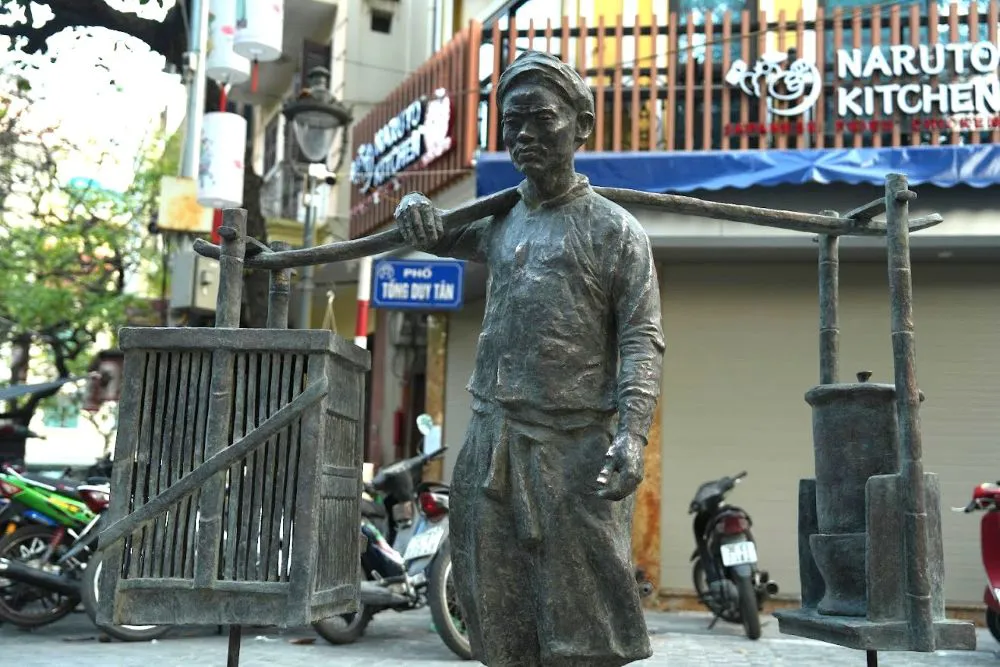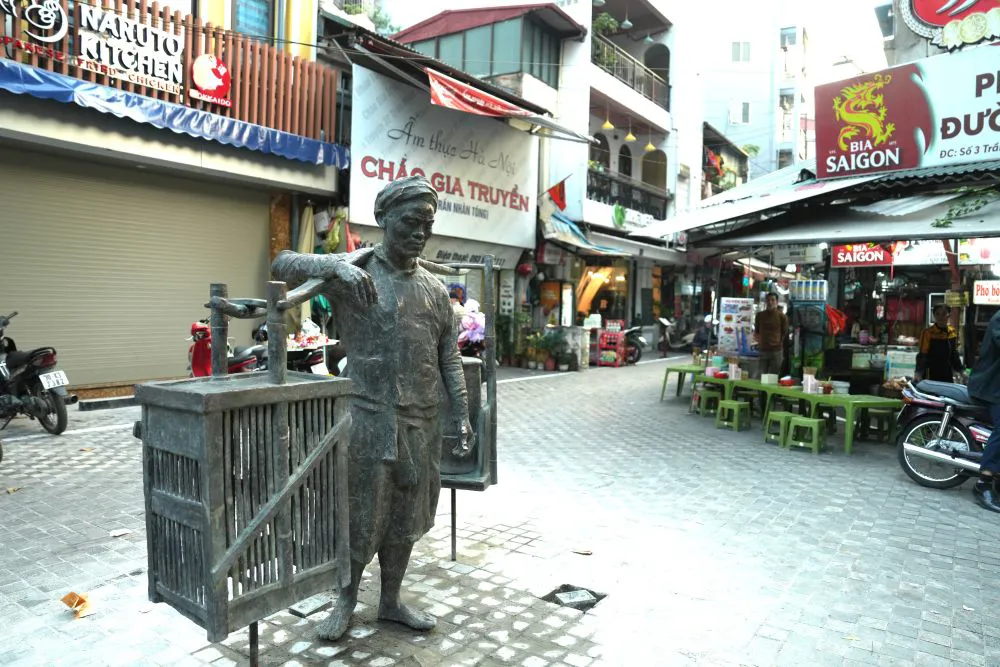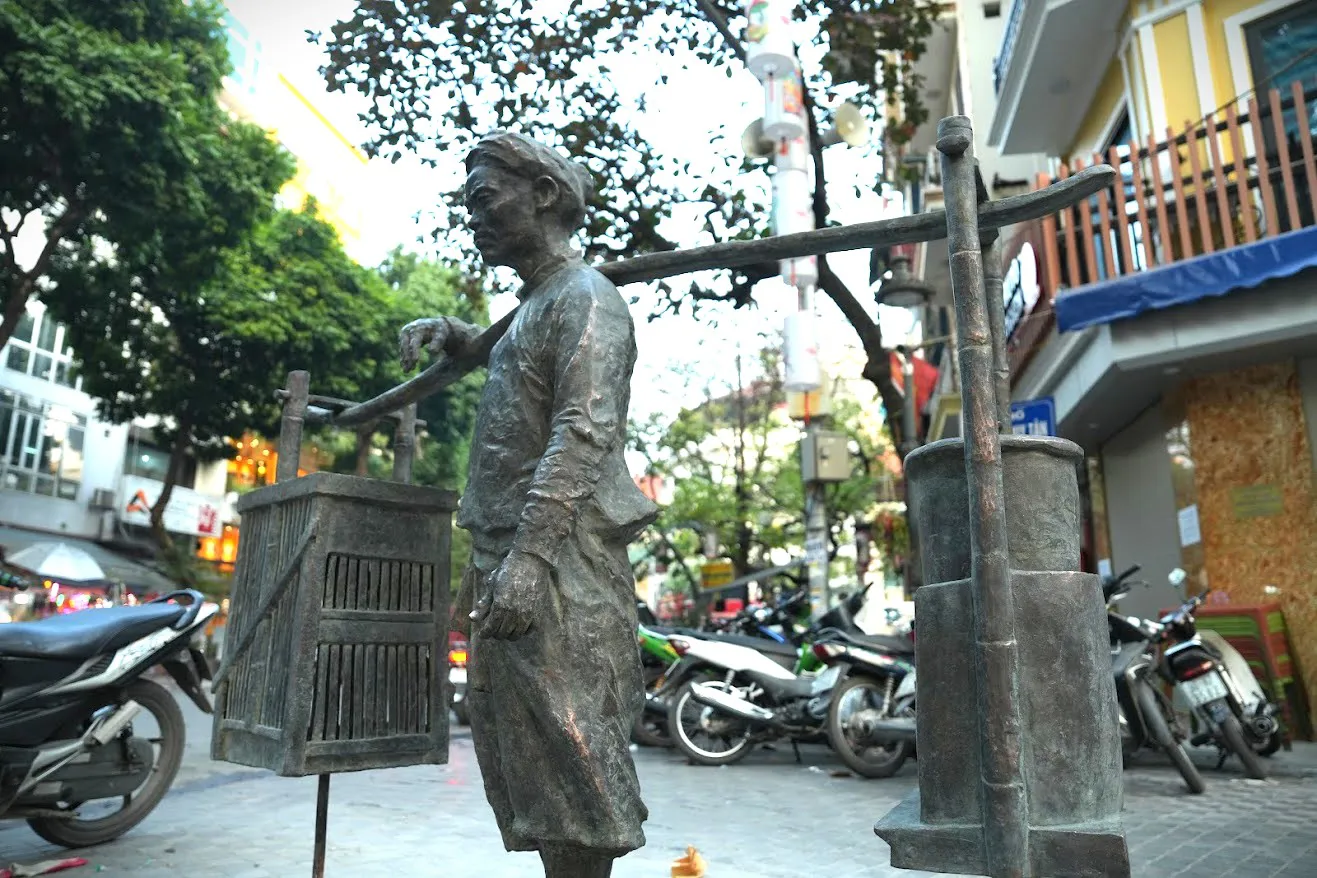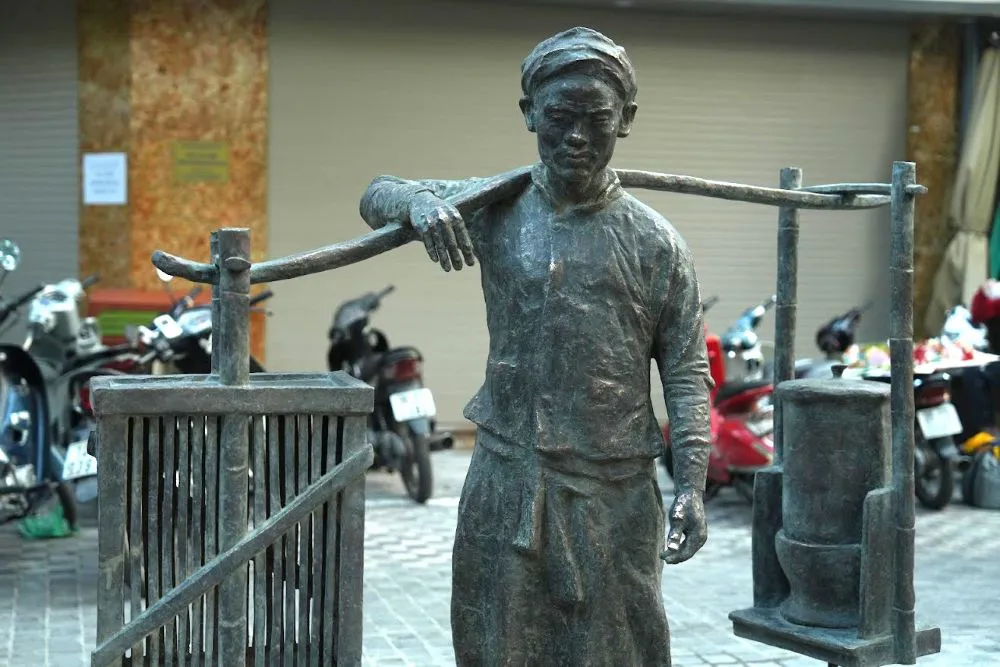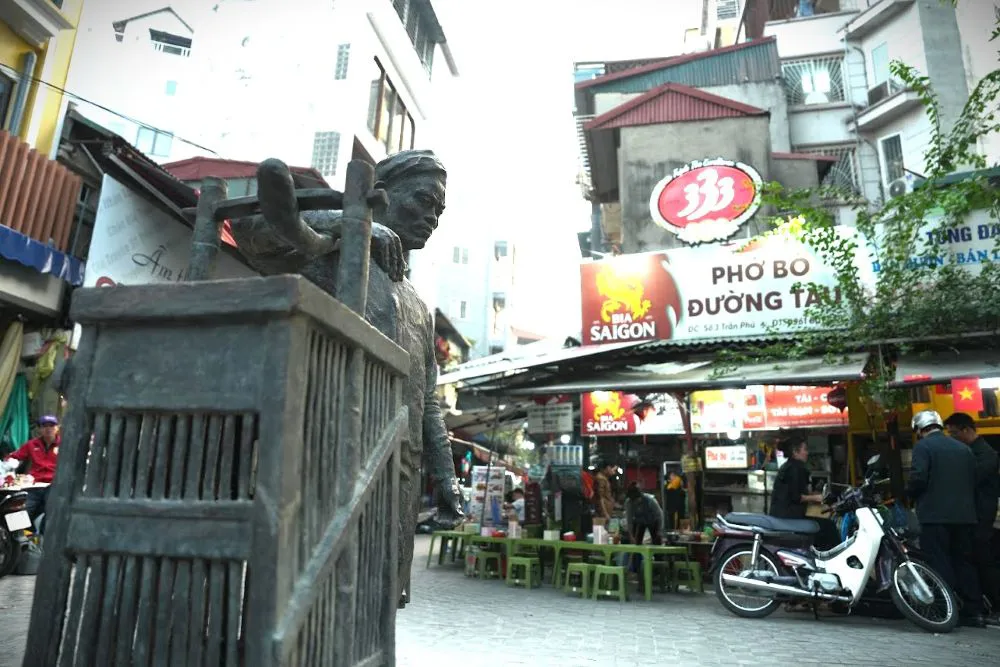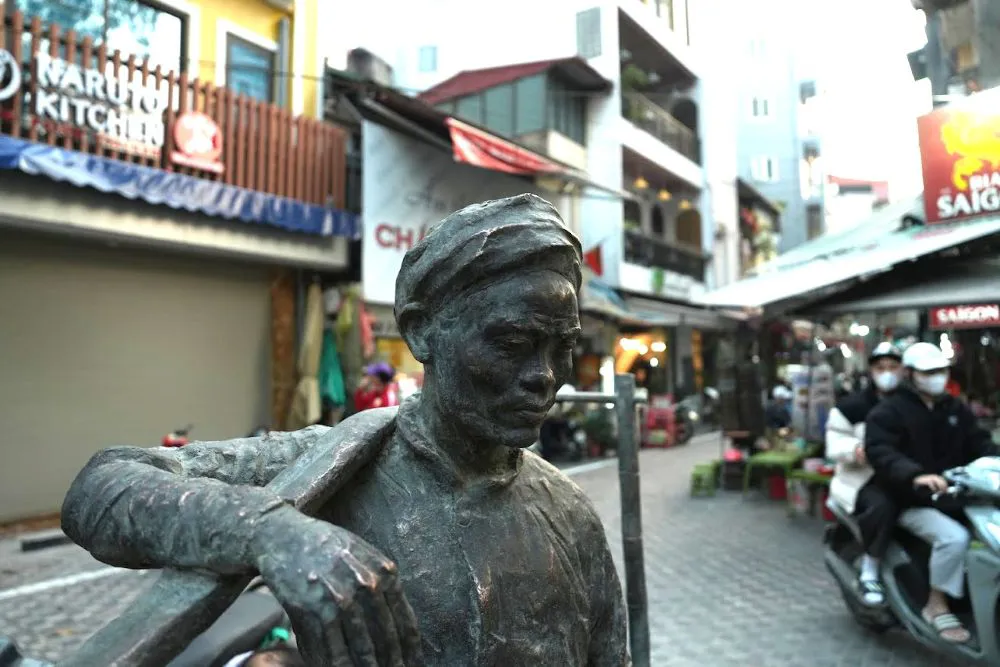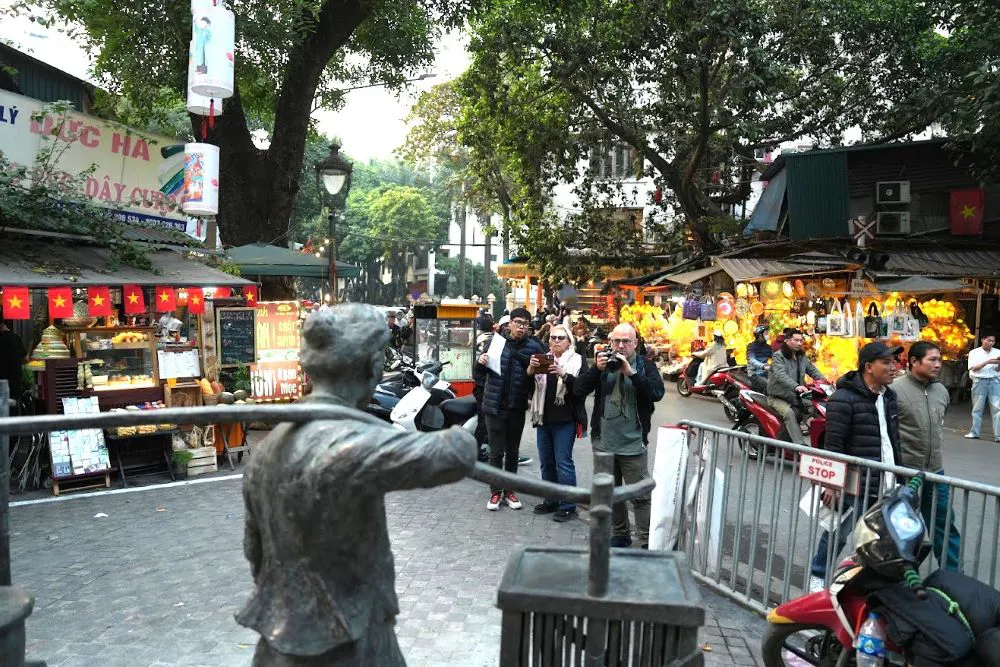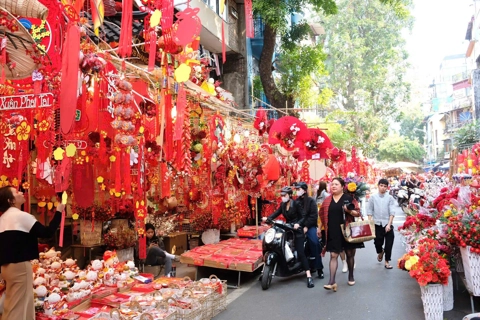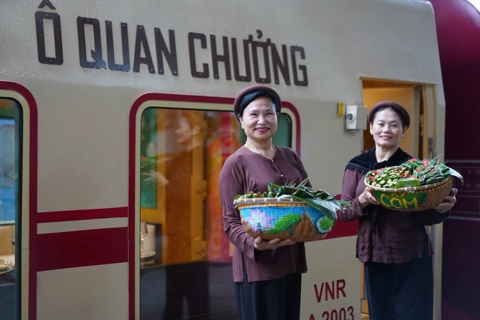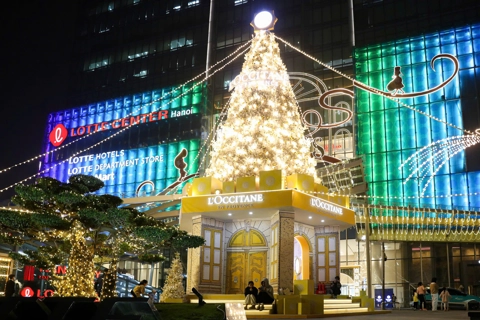The 1.6-meter bronze statue depicting a vendor selling pho, was installed on Tong Duy Tan Food Street in Hang Bong Ward, Hoan Kiem District, Hanoi.
|
| The newly erected bronze statue on Tong Duy Tan Street in Hanoi's Old Quarter. Photos: Huy Pham/The Hanoi Times |
According to curator Nguyen The Son, the statue, placed at the beginning of Tong Duy Tan Street near the famous "Train Street" of Tran Phu, welcomes both locals and tourists.
He said: "This location is within walking distance of Hoan Kiem Lake, making it an attractive spot for tourists." "The artwork is also a tribute to the value of Hanoi's culinary heritage, especially pho."
The statue's design was inspired by an old photograph by an unknown French author and captures the essence of the traditional pho-selling trade, once commonly practiced by vendors shouldering a pole with a cauldron at one end and a bowl cabinet at the other.
|
| Located at the intersection of Tong Duy Tan Street and Tran Phu Street, near the railway tracks, the statue serves as a fitting monument to Hanoi's street food culture. |
|
| Pho ganh is sold from mobile stalls that once dotted the streets of Hanoi. |
|
| Dating back to the French colonial era, pho ganh is served by street vendors shouldering a pole hanging deep, round bamboo baskets on either end, or "ganh" in Vietnamese. |
|
| One basket holds a cauldron of broth on a charcoal stove, while the other contains a homemade cupboard filled with all the ingredients, as well as bowls and chopsticks. |
|
| Pho ganh diners used to eat standing up, with one hand holding the hot bowl of noodles and the other using chopsticks, no spoons. |
|
| The bronze statue is expected to attract photo enthusiasts and tourists visiting Tong Duy Tan Street. |
Tong Duy Tan Street, also known as Cam Chi Alley, is one of the oldest neighborhoods in Hanoi, dating back to 1873. Due to its proximity to the examination school, it became a popular dining area for candidates taking exams at the Thang Long Imperial Citadel. During the French colonial period, it was known as Rue Brusseaux. In 1954, the street was renamed Bui Ba Ky Street and later became known as Ky Dong Street, after the famous Banh Cuon Ky Dong (rice crepes) sold by Mr. and Mrs. Ky Dong. In 1964, it was renamed Tong Duy Tan Street in honor of the 19th-century patriot Tong Duy Tan (1837-1892). In 2000, the city approved a project to upgrade the street's infrastructure, transforming it into a culinary culture hub within Hanoi's Old Quarter. Tong Duy Tan Street is 200 meters long and eight meters wide with no sidewalks, officially became Hanoi's first "Culinary Culture Street" in March 2002. |

